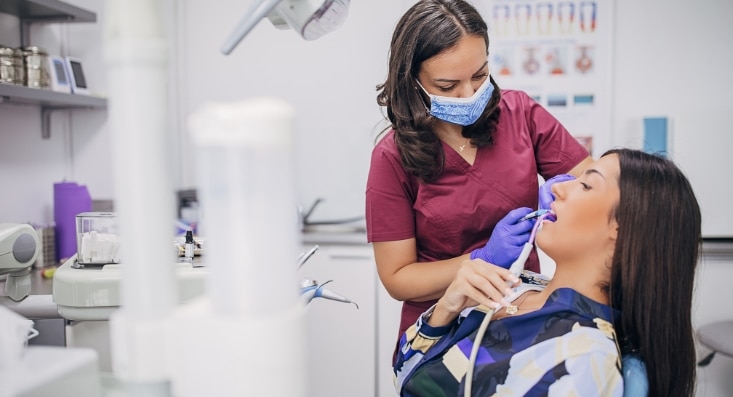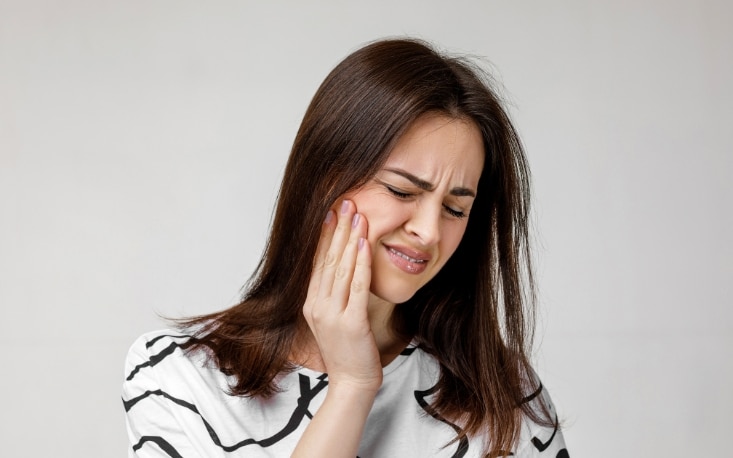ONLINE SCHEDULING AND VIRTUAL CONSULTS AVAILABLE

How Do You Handle a Tooth Injury After Getting Emergency Dental Care?

Dental emergencies can happen unexpectedly, causing pain and stress. Quick action can save your teeth and protect your oral health. After getting emergency dental care, proper carefulness at home plays a vital role in recovery. Neglecting post-treatment care can lead to complications and slow healing.
This guide will help you understand how to care for your dental injury after treatment. It provides simple, practical steps to ease your recovery process. Whether it’s a chipped tooth, knocked-out tooth, or another injury, these tips ensure you heal quickly and avoid further problems. Read on to learn the best practices after visiting an emergency dentist.
Understanding Dental Injuries
Dental injuries vary, each requiring specific treatment and care. Common types include chipped or broken teeth, knocked-out teeth, or soft tissue injuries. These injuries are frequently the consequence of accidents, athletic activities, or biting on hard things such as ice or candy.
A chipped tooth might only need smoothing, while fractures require bonding or crowns. Knocked-out teeth need immediate reimplantation within the first hour for the best results. Emergency dental care stabilizes the injury, stops bleeding, reduces pain, and prevents infection.
Understanding the type of injury helps you follow appropriate aftercare. Your dentist focuses on immediate stabilization, but your role in home care significantly impacts the outcome.
Immediate Steps to Take After Emergency Treatment
After seeing an emergency dentist, follow their instructions carefully to ensure proper healing. To relieve pain and prevent infection, the dentist may prescribe drugs like as antibiotics or painkillers.
If your tooth was knocked out and reimplanted, avoid touching or biting with that tooth. For fractures or chips, protect the treated tooth by avoiding hard or sticky foods. Keep the injured area clean using gentle rinses as instructed by your dentist.
You may need to schedule follow-up appointments for checkups or additional procedures, like crowns. Attending these appointments is crucial to monitoring healing and addressing any complications.
Adhering to initial treatment guidelines is essential for recovery. Ignoring advice can lead to infections, further damage, or prolonged pain. By taking immediate steps to follow your dentist’s directions, you set the stage for successful recovery.
Home Care Tips for Dental Injuries
Proper care at home helps your recovery and protects the injured area. Follow these tips for pain relief, hygiene, and dietary adjustments:
Pain Management
- Take over-the-counter painkillers like ibuprofen, as recommended by your dentist.
- Apply a cold compress to the cheek near the injury to reduce swelling.
Oral Hygiene Practices
- Brush gently around the injured area with a soft-bristled toothbrush.
- Rinse with warm salt water twice daily to prevent infection. Avoid vigorous swishing.
Dietary Modifications
- Avoid hard, sticky, or crunchy foods that can damage the treated tooth.
- Eat soft foods like yogurt, mashed potatoes, or smoothies during recovery.
These practices ease discomfort, minimize risks, and promote healing. Consistency is key to the best results.
Monitoring the Recovery Process
Keep a watchful eye on your recovery progress following treatment. Signs of proper healing include reduced swelling, improved comfort, and a stable treated tooth. Over time, the gums around the area should look healthier and less irritated.
However, certain symptoms may signal a problem. Persistent pain that doesn’t improve, increased swelling, or signs of infection like pus or fever require immediate attention. Consult your emergency dentist Plantation immediately if a treated tooth feels loose or moving.
Monitoring your recovery ensures timely action in case of complications. Addressing problems early prevents worsening conditions and protects your oral health.
When to Contact Your Dentist Again?
Sometimes, new problems arise after initial treatment, requiring a follow-up visit. For instance, persistent pain, unusual swelling, or bleeding may indicate a secondary emergency. Broken fillings, crowns, or worsening infections also require prompt care.
If you notice anything unusual, call your dentist without delay. Even minor issues can escalate if left untreated. It’s better to seek advice early and avoid complications.
Schedule follow-ups as recommended by your emergency dentist to track your healing progress. Staying proactive ensures lasting results and maintains your oral health.
Prevention of Future Dental Injuries
Preventing dental injuries saves you from future pain and costly treatments. Wear a mouthguard when playing sports to protect your teeth. Avoid chewing hard objects like ice or pen caps, which can cause fractures.
Quit habits like nail-biting or opening packages with your teeth to prevent unnecessary strain. Regular dental check-ups help detect vulnerabilities before they become problems.
Taking these precautions reduces the risk of emergencies and keeps your teeth safe. Preventive care is always easier and more affordable than emergency treatment.
Caring for a dental injury after seeing an emergency dentist is essential for recovery. Follow the dentist’s instructions, practice good hygiene, and monitor your progress closely. These steps ensure a smooth healing process and prevent further issues.
Protect your teeth by adopting preventive measures and maintaining regular dental visits. If you have any questions or concerns, please do not hesitate to contact our dental clinic. Prioritize your oral health to achieve a confident and pain-free smile.





